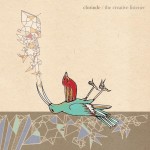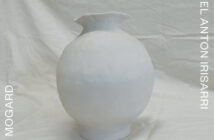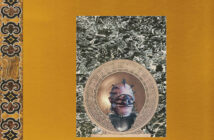
Clorinde was founded by brothers Andrea and Simone Salvatici after moving to the UK from Italy in 2005. Drawing inspiration from late medieval Europe, they play in minimalist, cyclic oblongs with room for improvisation inside the ellipses, wielding an array of plucked acoustic instruments, mandolin, bouzouki and banjo, kalimba, zither and ukulele, as well as bowed and struck glockenspiel, keyboards, drums and electric guitar. Their wood, metal and catgut sounds startlingly crisp, clear and contemporary, but the brothers titivate them with digital electronics to imbue mustiness and patina.
The Creative Listener is redolent of a life still lived in the countryside on a continent covered with enchanted forests. The album opens in disorienting, transporting fashion, the prelude ´Anno Domini´ establishing the setting and ´Cecile´ labouriously winding itself up like clock until a frighteningly insistent violin leads a spastic tarantella. Generally, however, Clorinde play cheerful rondeaux, like the courtly music-box romance of ´Cecile and the Knights´ and robust, peasant chain dance of ´Morello´. Face powder and sawdust mingle and linger in the air.
´The Caves of Polborne´ is a rich tapestry with a narrative arc while ´Pollen´ shifts hapharzardly with the breeze, a thousand tiny bells chiming. An impassioned Oriental divertissement called ´Du Yen´, featuring the Japanese shamisen, is followed by ´100 Women´, a whirling, complex chamber performance threatened briefly by the outburst of an all-out charivari down in the street.
´Circe´ is a percussive tour-de-force, both utterly modern and urbane in meter and dissonant edge and ancient and round as a village church bell. ´The Dance of Death´ which closes the album is an enthusiastic, tub-thumping one.
Stephen Fruitman



